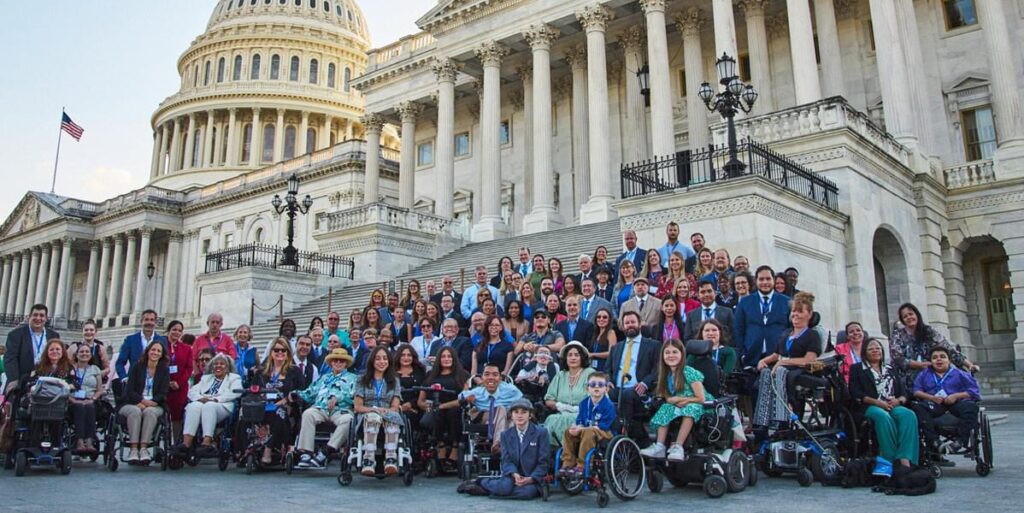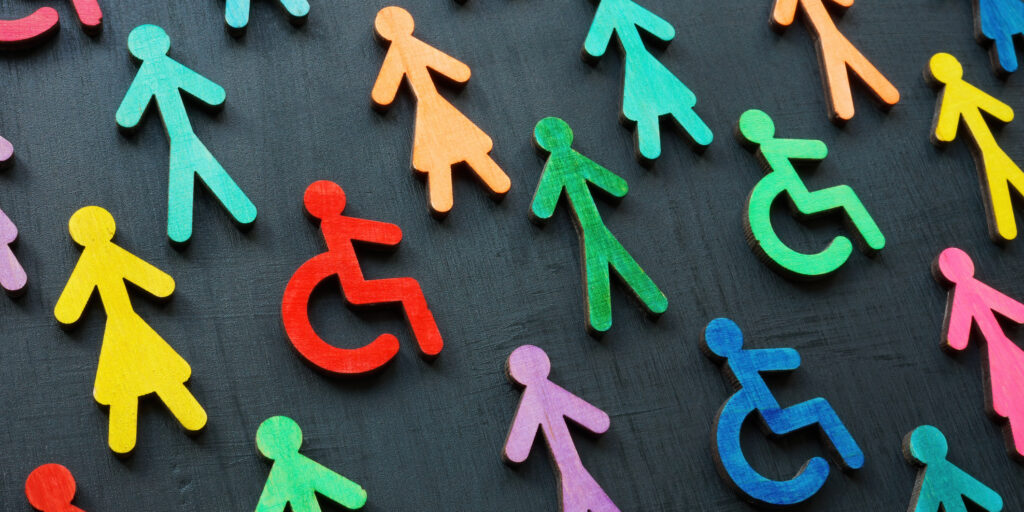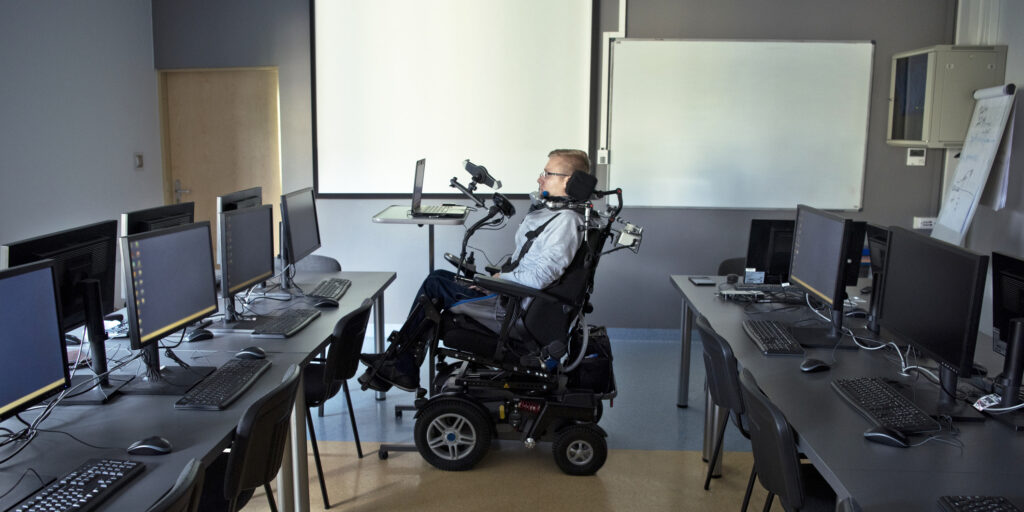
Travelers with Disabilities Share Their Top Tips to Avoid Mishaps
By Barbara and Jim Twardowski, RN | Tuesday, April 15, 2025
Travel blogger Cory Lee lives with spinal muscular atrophy (SMA) and travels with his 400-pound power wheelchair. He’s no stranger to travel snafus: his wheelchair charger blew up in Germany, an Alabama fire department rescued him when he was stuck on the top floor of a museum because the elevator broke, and he narrowly escaped being eaten by a hippopotamus in South Africa. Despite the challenges, Cory has built a career championing accessible travel and has visited all seven continents.
Seasoned travelers with disabilities understand that there’s always the possibility of a glitch. While you can’t anticipate every potential problem (aggressive hippos?), you can plan and prepare for a variety of scenarios.
Ground transportation
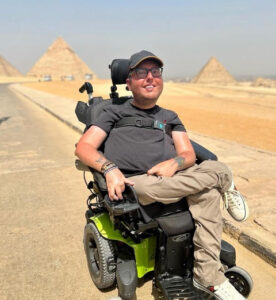
The first thing that Cory researches when planning a trip is transportation. “Sometimes there just isn’t great accessible transportation, so I will not even go to that destination,” he says.
Many of Cory’s international trips are orchestrated by accessible tour companies, such as Wheel the World, that arrange transportation, hotels, meals, and more. Accessible tour companies understand the needs of travelers with disabilities. “Luckily, there are more of them than ever before,” Cory says.
Cory loves New York City and its abundance of wheelchair-accessible taxis. However, he has repeatedly encountered taxi drivers who do not want to use the tie-down straps to secure his wheelchair in the vehicle.
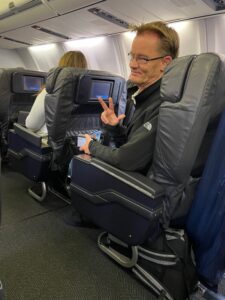
Don Talley has flown more than one million miles.
“Sometimes, I have to argue with them to use those straps and make it a safe ride for me,” says Cory. “It’s great they have the option of accessible taxis, but implementing safe practices is also really important.”
Getting from the airport to the hotel is a challenge for frequent flyer Don Talley, who has a form of congenital muscular dystrophy (CMD) and uses a 170-pound power wheelchair. He has traveled more than one million miles by air.
He often chooses a hotel with an airport shuttle for guests. Hotels that offer that service are required to provide that service to guests with disabilities. The service should be equivalent in terms of fare, response time, and hours of operation, according to the Americans with Disabilities Act (ADA). Don calls his hotel several days before his trip to discuss the availability of an accessible airport pickup. Often, hotel staff members seem unaware of this ADA rule, and Don escalates the conversation to a manager to resolve the issue.
Tips
- Research the accessibility of public transportation, such as subways and buses. Have a backup plan (taxi, bus) if a subway station has a broken elevator — a common occurrence in cities with subways.
- Find out if Uber or Lyft offers wheelchair-accessible vehicles (WAVs) in your location.
- Investigate renting an accessible van or hiring a car service when planning your trip.
Hotels
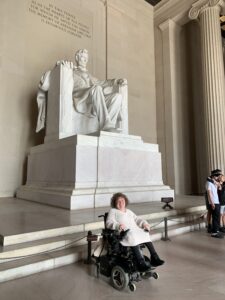
Mindy Henderson during a visit to Washington, DC
For many people with disabilities, a roll-in shower is essential. In the United States, the ADA guidelines stipulate the number of accessible guest rooms with a roll-in shower that hotels must provide. For example, a hotel with 51-100 rooms must have at least one guest room with a roll-in shower, and hotels with 301-500 rooms must have at least four. (Hotels with 50 or fewer rooms do not have to provide roll-in showers.)
According to the research report “Portrait of Travelers with Disabilities: Mobility and Accessibility,” 81% of respondents have dealt with inaccessible showers and tubs, and more than half (54%) have been given a room that did not match what they booked.
Mindy Henderson, MDA’s Vice President of Disability Outreach & Empowerment and Editor-in-Chief of Quest Media, experienced this on a recent trip. She requested an accessible room, but the hotel staff upgraded her to a larger room that was not accessible. Mindy, who lives with SMA, could not fit her power wheelchair through the bathroom door. All the accessible rooms were occupied, so the hotel’s solution was to remove the bathroom door. “My caregiver and I had to spend our visit using a bathroom with no door and no privacy,” Mindy says.
Tips
- Book your hotel stay as far in advance as possible. Get written confirmation that the hotel room is accessible and has the features you need (for example, a roll-in shower, grab bars, and communication devices).
- Ask for the room, doorway, bathroom, and shower dimensions to ensure that your equipment will fit.
- If you make a reservation online, call the hotel directly to confirm the room is accessible. Cory also calls the day before his arrival and the day he is arriving to ensure the hotel saves him the accessible room he reserved.
- You can also reserve accommodations using specialized booking services like AccessibleGo, Wheel the World, and Becoming rentABLE.
- Contact the property’s front desk or housekeeping service to determine if they have a shower chair. Bring any equipment you need to make the bathroom accessible for you.
Flying

Don Talley visiting Heidelberg, Germany
Arriving at your destination only to discover your wheelchair is missing, inoperable, or broken is a legitimate concern. Over a 20-year period, Don has boarded planes about 1,500 times. His wheelchair has been damaged seven times.
Don is a frequent flyer on United Airlines, which partners with Global Repair Group to repair assistive devices nationwide and even in some international destinations. When his wheelchair was damaged on a recent flight to Dallas, the airline contacted the repair service and had the wheelchair operating in less than an hour.
Tips
- Don recommends joining the airline’s free rewards program, even if you’re an occasional flyer. You’ll build a profile of preferences regarding seating and boarding needs.
- Download your airline’s mobile app. Most airlines make it easy to modify your reservation, change seats, choose onboard entertainment, and track your luggage in the app.
- Contact the airline’s Special Assistance or Mobility Services department to verify your assistance needs, such as using an aisle chair.
Travel insurance

Mindy Henderson in New York City
Before you take a trip, consider purchasing travel insurance to cover yourself for:
- Trip cancellation or disruption
- Travel health insurance
- Medical evacuation
Travel insurance can replace the cost of a canceled trip for a covered reason, such as a serious illness or injury of the insured person, travel companion, or family member.
If you are injured or ill while traveling, hospitalization or medical evacuation may be necessary. Be aware that Medicare and Medicaid do not cover medical costs when you are outside the United States. Private health insurance policies vary on this coverage. Find out ahead of time if your insurance has the coverage you need for your trip. If not, purchase travel insurance that includes medical coverage.
Pack a positive attitude
“When I’m traveling, I know that at some point, something is going to go wrong — whether it’s a fire alarm going off in the hotel or transportation not being accessible,” says Cory.

Don Talley enjoying a coffee in Hawaii.
Being flexible with your plans can salvage a trip. For example, if inclement weather means you can’t attend an outdoor event, switch gears and head to a museum, theater, or cozy coffee shop.
Arrive a day early if you are boarding a cruise or attending a special event, such as a wedding. An extra hotel night is worth the peace of mind.
Be realistic about your stamina. A hotel near the attractions you wish to see will be more convenient and allow you to rest if you are tired. Don’t overschedule yourself. Plan to take breaks and enjoy your surroundings.
“Traveling as a wheelchair user is never going to be easy. As long as you have a positive mindset and know that for every problem, there is a solution, you can get through almost anything,” says Cory. “I try to take a deep breath, remain calm, and stay positive with the people I’m interacting with.”
Next Steps and Useful Resources
- Read more Quest Media content on travel with a disability.
- MDA Ambassadors share their top tips and hacks for flying with power wheelchairs and medical equipment.
- Stay up to date on Quest content! Subscribe to Quest Magazine and Newsletter.
TAGS: Accessible Air Travel, Featured Content, Travel
TYPE: Blog Post
Disclaimer: No content on this site should ever be used as a substitute for direct medical advice from your doctor or other qualified clinician.


